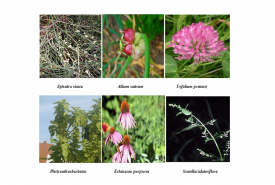ON THE THERAPEUTIC USES OF OCIMUM SANCTUM(TULSI)
About Author:
Dolly Prabhakar
Applied sciences deptt.(chemistry)
baddi university of emerging sciences and technology
baddi distt.solan (h.p.)
dolly.prabhakar@baddiuniv.ac.in
Abstract:
The medicinal plants are widely used by the traditional medical practitioners for curing various diseases in their day to day practice. In traditional systems of medicine, different parts (leaves, stem, flower, root, seeds and even whole plant) of Ocimum sanctum Linn (known as Tulsi in Hindi), a small herb seen throughout India.
Ocimum sanctum described as sacred and medicinal plant in ancient literature, Tulsi is known as the “Queen of plants” which is derived from ‘Sanskrit’, which means "the incomparable one"or “matchless one”. This plant belongs to the family Lamiaceae which is native throughout the Old World tropics and cultivated for religious and medicinal purposes. Tulsi have the various different species in the world .In this review we emphasized the pharmacological properties of five different species of Tulsi i.e. Ocimum sanctum/tenuliflorum,Ocimum gratissimum, Ocimum basilicum, Ocimum kilimandcharicum, Ocimum americanum/canum



 About Authors:
About Authors:  ABOUT AUTHORS:
ABOUT AUTHORS: 
 ABOUT AUTHORS:
ABOUT AUTHORS: About Authors:
About Authors: 





